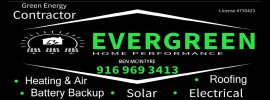Switching to solar panels is one of the best ways to reduce energy costs, but did you know that your roofing plays a crucial role in their efficiency? Many homeowners overlook the importance of pairing a new roof with a solar panel installation to maximize long-term savings. A strong, durable roof ensures that your solar investment is optimized for decades.
In this article, we’ll explore how roof installation and solar panel installations work together, the financial and energy benefits, and how to choose the best roofing material for a solar-powered home.
Why Roofing and Solar Panels Work Best Together
A well-structured roof acts as the foundation for solar panel systems. When installed together, they enhance:
- Durability: A new roof prevents premature leaks or repairs that could require solar panel removal.
- Cost Efficiency: Combining projects reduces labor costs and ensures long-term savings.
- Energy Optimization: The right roofing material enhances solar panel efficiency by improving reflectivity and insulation.
By planning both at the same time, homeowners can avoid costly roof replacements after solar panels are installed.
Benefits of Integrating Roofing and Solar Panels
Pairing a new roof installation with solar panels offers several advantages:
✅ Maximized Energy Savings: A well-designed roof improves solar panel output.
✅ Long-Term Durability: Solar panels shield the roof from elements, extending lifespan.
✅ Higher Property Value: Homes with solar-integrated roofing sell at a premium.
✅ Lower Maintenance Costs: A new, durable roof reduces future repair expenses.
✅ Enhanced Sustainability: Reduced energy reliance lowers carbon footprint.
When you integrate these two projects, you ensure that your solar panels function optimally without future disruptions.
Choosing the Right Roof for Solar Panels
Not all roofs are created equal when it comes to solar energy production. Key factors include:
- Material: Some roofing materials, like metal or asphalt shingles, work better for solar panel mounting.
- Slope & Orientation: South-facing roofs with a slope of 15°–40° maximize sunlight absorption.
- Structural Strength: A roof must support the weight of solar panels and mounting racks.
Before installing solar panels, it’s essential to evaluate whether your current roof is in good condition or needs replacement.
Types of Roofs That Work Well with Solar Panels
| Roof Type | Pros for Solar Panels |
|---|---|
| Asphalt Shingles | Affordable, easy to install solar mounts |
| Metal Roofs | Long lifespan, lightweight, heat-reflective |
| Tile Roofs | Durable, aesthetic appeal, compatible with solar brackets |
| Flat Roofs | Easier panel positioning, high space efficiency |
If your existing roof is aging or damaged, replacing it before solar panel installation ensures long-term stability.
Cost Considerations of Roofing and Solar Panel Installation
Combining roofing and solar installation may seem expensive, but long-term savings make it worthwhile.
💰 Initial Investment: Roof replacement + solar panels can cost between $15,000 – $40,000, depending on size and material.
💡 Energy Savings: Homeowners can save up to 70% on electricity bills annually.
🏡 Tax Incentives & Rebates: Federal and state credits can cover up to 30% of costs.
💲 Financing Options: Many solar companies offer zero-down financing or leasing options.
How Solar Panels Extend Roof Lifespan
Solar panels act as a protective shield for your roof, offering benefits like:
- UV Protection: Reduces sun damage, preventing roof degradation.
- Temperature Regulation: Lowers indoor heat, reducing HVAC strain.
- Weather Resistance: Shields the roof from rain, snow, and hail.
A properly installed solar roofing system can extend your roof’s lifespan by 10–20 years.
Government Incentives & Tax Credits for Solar Roofing
Governments offer financial benefits for homeowners switching to solar energy.
🌞 Federal Solar Tax Credit (ITC): Covers 30% of installation costs.
🏡 State Rebates: Vary by location, some states offer additional incentives.
⚡ Net Metering Programs: Allows homeowners to sell excess energy back to the grid.
By leveraging these incentives, you can significantly lower the upfront cost of integrating a new roof with solar panels.
FAQs
How long does a roof need to last for solar panels?
- Ideally, at least 25–30 years, matching the lifespan of solar panels.
Can I install solar panels on an old roof?
- It’s possible, but not recommended if the roof is near the end of its lifespan.
What’s the best roofing material for solar panels?
- Metal and asphalt shingles are the best options due to their durability and compatibility.
Do solar panels void a roof warranty?
- No, but it’s important to work with certified solar installers.
What happens if I need a roof replacement after installing solar panels?
- The panels will need to be removed and reinstalled, adding to costs.
Conclusion
Combining roofing and solar panels is a smart investment for energy efficiency, long-term savings, and home sustainability. By choosing the right roofing material, understanding installation costs, and leveraging tax incentives, homeowners can maximize solar energy benefits while ensuring their roofs remain durable for decades.
Ready to upgrade your home with solar-integrated roofing? Contact Evergreen HP today for expert consultation!

